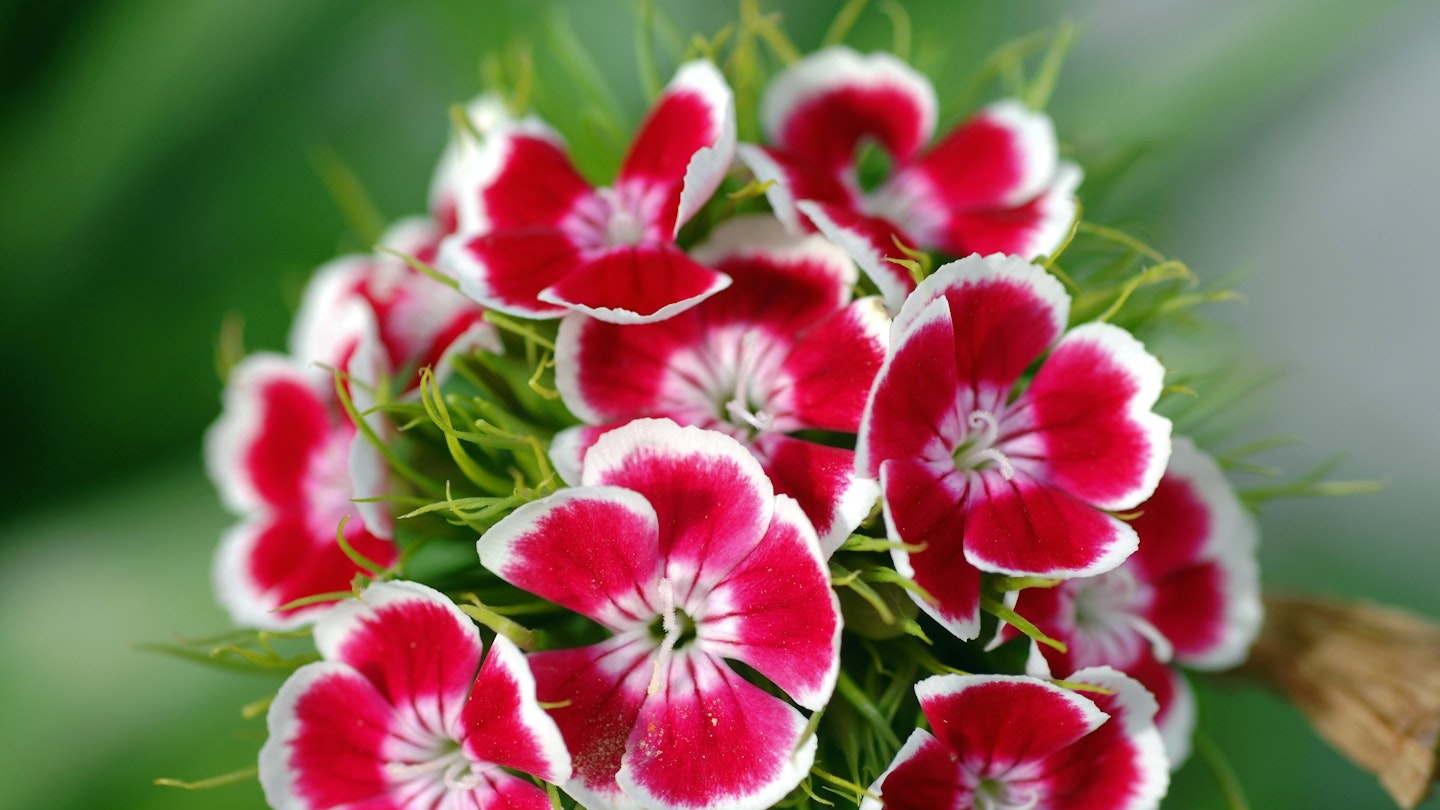More commonly known by their everyday names of carnations, pinks and sweet Williams, Dianthus is a broad genus of around 300 species. They are a wide-ranging group of plants – annuals, evergreen perennials or short woody shrubs – but they have a few usual things in common. Greyish leaves and bright, showy flowers that are usually fragrant.
We know well the baby pink carnations D. caryophyllus, usually found in old-fashioned bouquets, but there are many exquisite natural species and many hundreds of bred varieties, as it is one of the most hybridised genera around. D. superbus ‘Crimsonia’ shows off wonderful feather boa-like scarlet single blooms in late spring and summer, while at the other end of the spectrum is elegant bird’s wing-like fringed pink D. monspessulanus, a pure white natural mountain species. For something completely different, and if you grow flowers for cutting, D. barbatus ‘Green Trick’ (www.sarahraven.com) is an acid-green ruffled sweet William that is actually a foliage plant. Try it amongst some orange geums for a heady mix.
Growing and maintaining
Dianthus are well suited to rockeries and alpine displays, enjoy very well-drained neutral or slightly alkaline soil in the full glare of the sun.
-
Water them very well and deadhead blooms regularly for a continued showing.
-
Take cuttings of non-flowering shoots in summer, trimming just below a leaf joint.
-
Leave four sets of leaves on the shoot, and remove the rest lower on the stem.
-
Dip a few of these shoots in hormone rooting powder and pot up, keeping new plants in a frost-free place over winter.
Flower facts - Pinks
Dianthus gratianopolitanus, or Cheddar pink, was chosen as the County flower of Somerset in 2002 in a poll by Plantlife. It is now found in the wild only in the Cheddar Gorge.
Five varieties to try
D. carthusianorum
From the alpine meadows of central and southeast Europe. Single vivid magenta flower on each stem. Height: 40cm.
D. ‘Pixie Star’
A dwarf pink with classic pink blooms and red central detailing. Great for an alpine or rockery display. Height: 20cm.
D. barbatus
Sweet Williams, as they’re more commonly known, have smaller, delicate flowers, clustered on top of thick stems. Height: 45cm.
D. ‘Mrs Sinkins’
A classic, highly fragrant ruffled pink with double, pure white large blooms. Height 50cm.
D. ‘Gran’s Favourite’
A popular variety, much sought after for its pretty light and dark pink picotee flowers. Height: 40cm.
